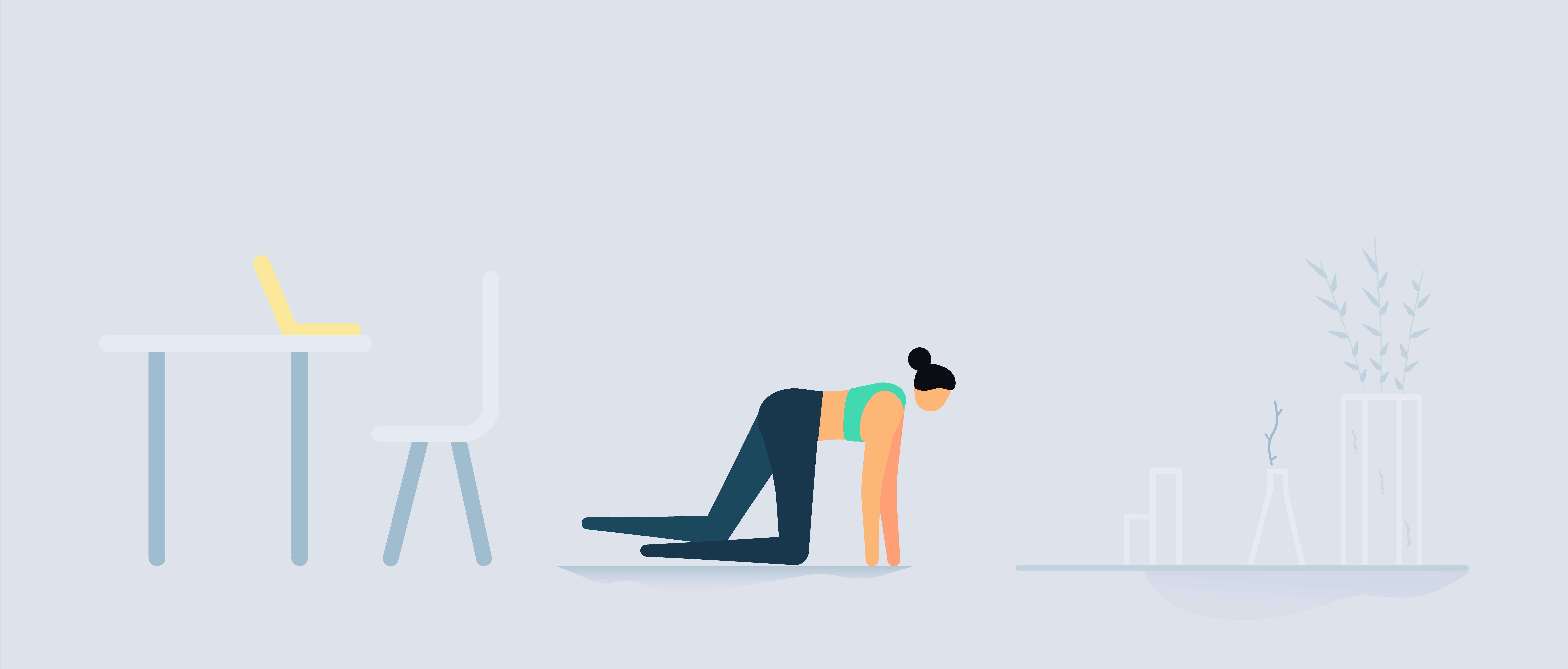
Could crawling exercises be the crazy-good full-body workout you’ve been looking for? Read on to find out more about the impact of crawling and check out some of our favorite examples, from bear crawl workouts to lizard crawls.
Over the past couple of years, fitness professionals have been paying a whole lot of attention to crawling, and there’s a large body of thought suggesting that incorporating crawl-based exercises into your workouts could yield substantial health benefits. And before you ask, no, there’s not some other meaning of “crawling” that you’re not familiar with. When we say “crawl,” we mean crawl like a baby! Get the lowdown on the health benefits of crawling, as well as a couple of our favorite crawling exercises.
How can crawling boost your physical health?
First, it’s important to remember that crawling is a genuine full-body exercise, which means that it engages a wide variety of muscle groups. From your quads, glutes, and calves to your abdominal muscles, hips, and shoulder girdles, crawling exercises tone your whole body. Plus, crawling is said to be the foundation of your gait pattern, which means that it ties your whole body together, boosting your coordination and kinesthetic awareness in the process.
And there are other physical benefits, with crawling exercises linked to improved core stability and flexibility. When you crawl on your hands and knees, your core muscles are getting a great workout, while moving on your palms and knees helps you balance and stabilize your body more effectively. This can have a variety of health benefits, but perhaps most crucially, it can help to reduce your chances of injuries.
Aside from the physical benefits of crawling, there have also been suggestions that crawling can help to reprogram your central nervous system (CNS). The idea is that crawling is a kind of “reset button.” It forces your body to synchronize your coordination, movement, and reflexive stability. Furthermore, there have been reports that crawling could have a beneficial effect on the corpus callosum, which is the highway linking the two hemispheres of your brain.
What’s the case against crawling?
Well, one of the key concerns is a lack of scientific evidence for the idea that crawling helps to reset your CNS, as this isn’t an area with extensive research around it. In addition, there’s the potential for knee pain, as well as the possibility that crawling exercises may exacerbate existing shoulder, wrist, or neck issues. Bottom line: it seems clear that crawling could have serious health benefits, but it’s important that they aren’t overstated.
Crawling exercises to try at home
Feel like adding crawling to your next workout? There are lots of different crawling exercises to get started with, and since they’re so simple, you don’t even need to go to the gym to reap the benefits. Just remember to talk to your doctor before making any substantial changes to your exercise regimen!
- Bear crawl workout: Dynamic and challenging, bear crawl workouts are the prototypical crawling exercises. Just crouch down with your hands shoulder-width apart, raise your hips in the air, and crawl forward, moving your limbs as far forward as they can reach. Then do the same for the opposite side.
- Leopard crawl workout: Ideal for boosting core stability and coordination, leopard crawl workouts can work as a warm-up exercise or as part of your main workout. So, how do they work? Simple. Begin in the push-up position, keep your spine neutral, and brace your core as you move forward.
- Lizard crawl workout: A little more complicated to perform, lizard crawl workouts are a great choice for the veteran crawler. There are many different variations to try, but for a basic lizard crawl, keep both hands on the floor before slowly moving your knee to waist height, placing the ball of your foot on the floor. Then slide down so that your chest hovers about 2 inches from the floor before returning to the start position.
So, what’s the deal? Should you really be going gaga for crawling exercises? Well, there are plenty of reasons to be optimistic, and since crawling is so easy to add into your workouts and doesn’t require any specialist equipment, why not try them out for yourself?


